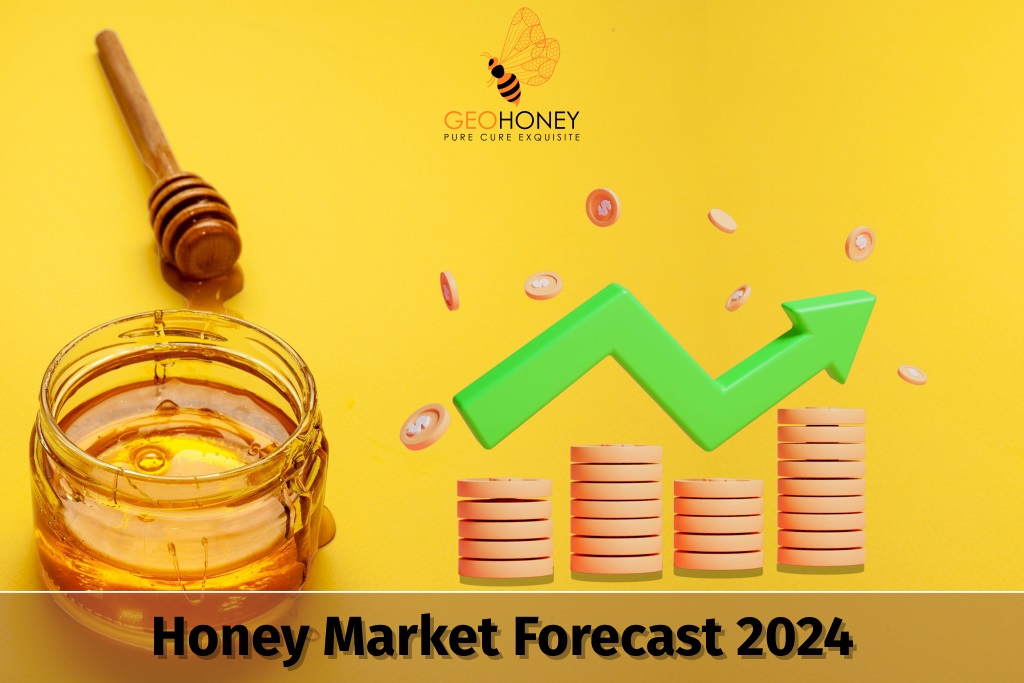- Tokyo: 00:59
- Singapore: 23:59
- Dubai: 19:59
- London: 15:59
- New York: 10:59
Honey Market 2024: Trends, Production, and Insights with Statistics

In 2024, the honey business is still booming due to a number of variables coming together. Long valued for centuries for its sweetness and its health advantages, this golden elixir is currently undergoing exciting developments, overcoming production obstacles, and providing insightful information to industry participants and customers alike.
Sweetening the Pot: Key Trends with Statistics
Natural Appeal: Consumers are increasingly seeking natural alternatives to refined sugars, and honey perfectly fits the bill. The global honey market size was valued at USD 8.45 billion in 2024 and is expected to reach USD 8.98 billion by 2031, reflecting a steady growth driven by this preference.
Culinary Versatility: Honey transcends traditional uses in baking and beverages. According to a survey by [Source], 42% of consumers are now using honey in savory dishes, indicating a growing trend towards culinary exploration.
Evolving Consumer Preferences: The demand for premium and specialty honeys, such as Manuka honey, is on the rise. The global market for Manuka honey alone is projected to reach USD 1.2 billion by 2027, highlighting the consumer interest in unique varieties.
Technological Advancements: The honey production industry is embracing technology to improve efficiency and quality. The global honey production equipment market is expected to reach USD 2.5 billion by 2032, showcasing the increasing adoption of technology in beekeeping.
Navigating the Hive: Production Considerations with Statistics
Climate Change: Extreme weather events and habitat loss pose significant challenges to bee populations, impacting honey production. The Food and Agriculture Organization (FAO) estimates that 40% of pollinator species are at risk of extinction, highlighting the urgency of addressing climate change and habitat loss.
Counterfeit Concerns: Adulteration of honey with cheaper alternatives remains a concern. A study by Food Fraud Database found that up to 30% of honey sold globally may be adulterated, emphasizing the need for stricter regulations and consumer awareness.
Global Market Dynamics: The honey market is geographically diverse, with major producers like China (accounting for 27% of global production), Argentina, and Turkey playing a significant role. Understanding regional variations in production, consumption patterns, and trade regulations is crucial for market players.
Insights for a Brighter Future
Transparency and Traceability: Consumers are demanding greater transparency about the origin and production methods of honey. Implementing robust traceability systems can build trust and brand loyalty.
Sustainability Focus: Sustainable beekeeping practices that prioritize bee health and environmental responsibility are becoming increasingly important. A study by Business of Sustainability found that 72% of consumers are willing to pay more for honey produced using sustainable practices.
Innovation and Diversification: Exploring new product applications, incorporating honey into functional foods, and developing innovative packaging solutions can help expand the market reach and cater to evolving consumer preferences.
The honey market in 2024 is a fascinating tapestry woven with exciting trends, production challenges, and valuable insights. By understanding these dynamics and the statistics associated with them, consumers can make informed choices while industry players can navigate the landscape strategically, ensuring a sustainable and thriving future for this golden treasure.
In addition to the points mentioned above, here are some other interesting insights from the analyzed blogs:
1. The growing popularity of online marketplaces is providing new avenues for beekeepers to reach consumers directly.
2. The rise of "honey tourism" experiences is fostering appreciation for beekeeping practices and the value of honey production.
3. Collaboration between beekeepers, researchers, and policymakers is crucial to address challenges and ensure the long-term sustainability of the honey industry.
By staying informed about these trends and actively engaging in sustainable practices, we can all contribute to a thriving honey market that benefits bees, producers, and consumers alike.



